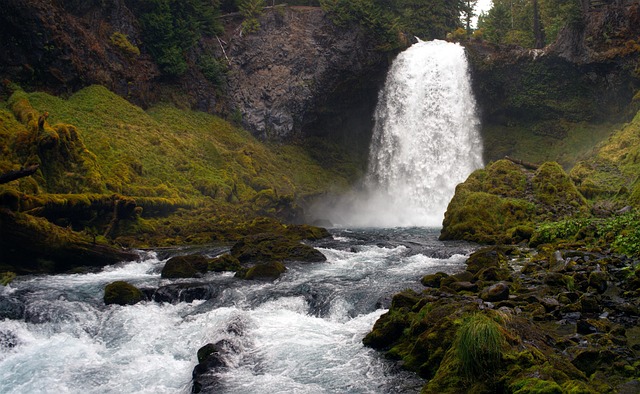The early settlers of Lane County, Oregon in the mid-19th century were drawn by the region's untamed wilderness, diverse flora and fauna, and natural resources. They faced significant challenges including rugged terrain, isolation, harsh climate, and limited resources. Despite these obstacles, their resilience led to the establishment of thriving communities that became vibrant cities, shaping the county's rich cultural heritage and economic prosperity. Balancing land use, agriculture, timber, water rights, and environmental preservation was critical for Lane County's long-term success.
“Lane County, Oregon, boasts a rich history woven with the struggles and triumphs of its early settlers. This article delves into the challenges faced by these pioneers who ventured into uncharted territories. From historical context tracing back to the county’s earliest settlers to pressing issues like land allocation, climate difficulties, and social-economic struggles, each era presents a unique set of obstacles. Understanding these challenges offers valuable insights into Lane County’s evolution and the resilience of its pioneer communities.”
- Historical Context: Early Settlers in Lane County
- Challenges Faced by the Pioneer Communities
- Land and Resource Allocation Issues
- Climate and Environmental Difficulties
- Social and Economic Struggles of Lane County's Settlers
Historical Context: Early Settlers in Lane County

The story of Lane County, Oregon begins with the early settlers who ventured into this untamed land in the mid-19th century. Back then, the region was a vast wilderness teeming with diverse flora and fauna, attracting adventurers, farmers, and entrepreneurs seeking new opportunities. The first European explorers marveled at the lush forests, fertile valleys, and promising rivers, setting the stage for future settlement.
These pioneering settlers played a pivotal role in shaping the county’s history and identity. They braved treacherous journeys, navigated unfamiliar territories, and established communities that would eventually flourish into the vibrant cities we know today. The early settlers’ resilience, determination, and spirit of adventure laid the foundation for Lane County’s rich cultural heritage and economic prosperity.
Challenges Faced by the Pioneer Communities

The early settlers in Lane County, Oregon, faced a myriad of challenges as they embarked on the task of establishing communities in this new and often harsh environment. One of the primary difficulties was the rugged terrain, characterized by dense forests, steep mountains, and fast-flowing rivers, which made transportation and communication difficult. The isolation of many pioneer settlements also meant that these communities were largely cut off from external supplies and support for an extended period.
Additionally, the region’s unpredictable climate presented significant obstacles. Severe winter storms and heavy snows often trapped settlers in their homes for weeks at a time, making it hard to gather food and maintain necessary infrastructure. Droughts, on the other hand, led to water shortages and crop failures, further straining the resources of these fledgling communities. Despite these hardships, the early settlers’ resilience and determination allowed them to persevere, paving the way for the prosperous and diverse communities that Lane County is known for today.
Land and Resource Allocation Issues

The early settlers in Lane County, Oregon, faced significant challenges related to land and resource allocation. With a diverse landscape encompassing lush forests, fertile valleys, and expansive coastal areas, managing these resources became a complex task. As populations grew, the demand for agricultural land, timber, and water rights intensified, leading to conflicts among settlers. The limited availability of suitable farming lands, especially near urban centers, prompted many to venture further into the county’s interior, causing tensions with indigenous tribes who had long inhabited these regions.
Resource allocation issues were exacerbated by differing perspectives on land use. Settlers from various backgrounds, including farmers, loggers, and homesteaders, held diverse views on how the land should be utilized. These conflicts often centered around water rights for irrigation, logging practices, and preservation of natural habitats. In light of these challenges, finding a balance between sustaining local industries and preserving the environment became crucial for the long-term viability of Lane County.
Climate and Environmental Difficulties

The early settlers in Lane County, Oregon, faced significant challenges due to the region’s diverse and often harsh climate. The county’s geography, characterized by coastal plains, mountains, and forests, presents unique environmental difficulties. Heavy rainfall and frequent storms can lead to flooding, eroding soil and disrupting agricultural activities, which were crucial for survival and economic stability. Additionally, extreme weather events like snowstorms and ice can isolate communities and hinder travel, making it difficult for settlers to access essential resources and services.
Lane County’s climate also brings prolonged dry spells during the summer, posing drought risks that have historically impacted farming and livestock management. The environmental challenges are further compounded by the region’s fire-prone nature, with wildfires becoming more frequent and intense due to climate change. These factors tested the resilience of early settlers who had to adapt their farming practices and develop sustainable strategies to thrive in this dynamic and sometimes unforgiving environment.
Social and Economic Struggles of Lane County's Settlers

The early settlers of Lane County, Oregon, faced significant social and economic struggles as they ventured into uncharted territories. The region’s lush forests and fertile valleys attracted many families seeking new beginnings, but the challenges were immense. These pioneers had to navigate through dense wilderness, clear land for agriculture, and establish communities in an area with limited infrastructure and resources. The isolation of Lane County often left settlers feeling disconnected from regional support networks, making it difficult to access essential supplies and services.
The economic landscape was equally demanding. Early settlers relied heavily on farming and timber industries, which were inherently unpredictable due to weather patterns and market fluctuations. Many families struggled with poverty, especially during harsh winters when food supplies ran low. The lack of established trade routes and transportation options further exacerbated their financial woes. Nonetheless, these challenges forged a resilient community spirit as settlers supported one another, sharing skills, resources, and knowledge in their quest for survival and prosperity in Lane County.
